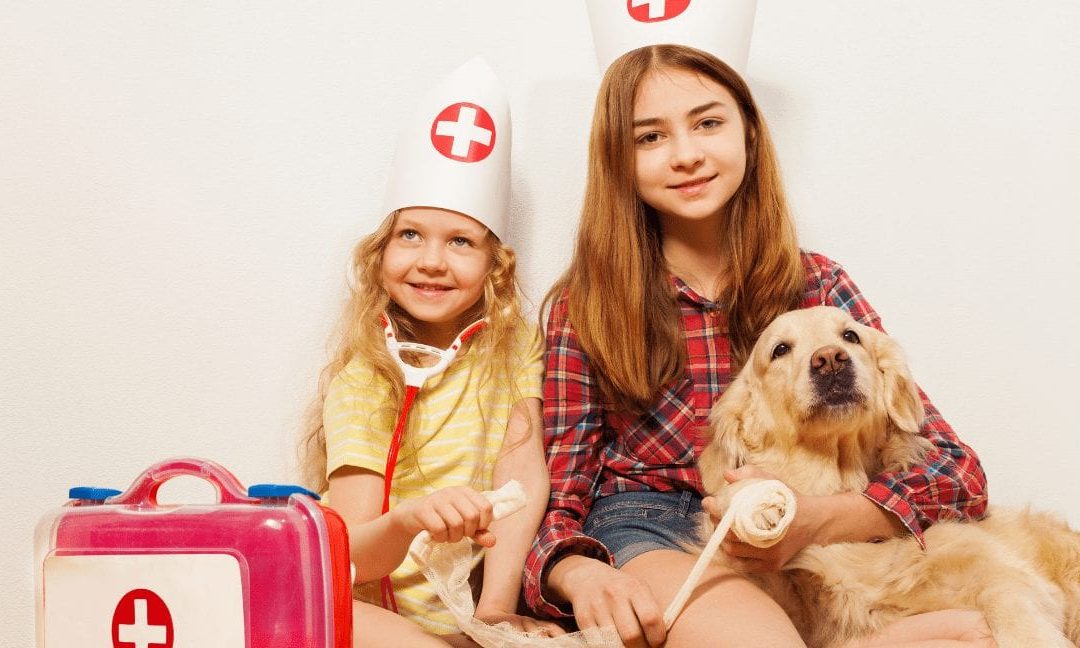Knowing how to administer pet first aid is important when you’re a pet parent. Younger cats and dogs, in particular, are natural explorers; they want to try new activities, wander off to different places and even inadvertently consume toxic substances. Unfortunately, their innate curiosity sometimes makes them prone to injuries and illnesses. Performing basic first aid when they’re hurt will mitigate the effects of the accident and even help save your pet’s life.
How To Do Pet First Aid For Common Injuries In Dogs And Cats
Cuts
For superficial cuts, clean it with saline solution and make sure to flush out all the dirt debris around the area. If something is stuck deep within the skin, DO NOT pull it out. Let the vet do it.
If it’s bleeding profusely, you can stop it by applying pressure and a firm bandage. If the bleeding continues even after a reasonable amount of time, seek veterinary assistance.
Wounds
When pet play becomes too rough or turns into a fight, they tend to scratch or bite each other, resulting in scrapes and wounds. Minor wounds can be treated with antiseptic, wound gel, bandages and medications.
When it’s a larger wound or if it results in a nasty infection, take your dog or cat to the vet immediately. Signs that it’s infected include swelling, redness, heat in the area, abscess or pus discharge, and lethargy due to pain.
Burns
Treat burns immediately by cooling the area with water or ice pack for at least 10 minutes. DO NOT apply butter or tight bandages as they may get stuck on the burnt part of the body. Use silver sulfadiazine ointment (commonly sold as Silvadene) and cover the burn wounds loosely with sterile, dry dressing to minimise infection. Seek veterinary care right away.
Broken Bones
Trauma such as falls from heights or being hit by a vehicle are common causes of fractured bones in dogs and cats. To spot the condition, look for any swelling, deformity, or bones sticking out of the skin. Pay close attention to your pet’s behaviour such as crying, limping or difficulty getting up.
When transporting them to the vet clinic, move them slowly and with extra care. DO NOT try to try to put the bone fragments back. You can use a blanket as a makeshift stretcher when carrying them to the car.
Keeping them in a stable position is imperative, so hold them while in the vehicle on your way to the vet. It’s ideal to have someone else drive while you carry your injured fur baby.
Poisoning
If you suspect your pet to have ingested something toxic, identify the substance and take them to the vet immediately. When not addressed quickly, poisoning can be fatal.
DO NOT attempt to do mouth to snout resuscitation because you may be putting yourself at risk of becoming contaminated as well.
Four Tips When Performing First Aid for Pets
- Stay calm and prevent panic. Use a soothing voice to appease your pet.
- Be wary of your safety. Pets tend to be aggressive when in pain. They might bite and scratch so opt to use a muzzle or a restraint when treating them.
- Prevention is always better than cure. Remove toxic plants, food or other substances from your home. If you need the items, make sure you keep them in an area where your pets can’t reach.
- Have a pet first aid kit ready at all times. You can include the following items:
- Gauze pads
- Adhesive tape
- Cotton swabs
- Disposable gloves
- Scissors
- Tweezers
- Saline solution
- OTC antibiotic ointment
- Alcohol wipes
- Contact information of veterinary emergency clinics
Being a responsible pet parent means ensuring the safety of your animal buddy at all times. Know how to provide the right pet first aid so you can feel confident that you can protect your pets from any untoward accidents or harm.
Related Articles:
Toxic Foods Not On The Menu This Easter For Our Furry Friends
First Aid For Pets How We Can Help Our Furry Friends In Their Time Of Need
Related Tag: Pet Cremation Services Brisbane


